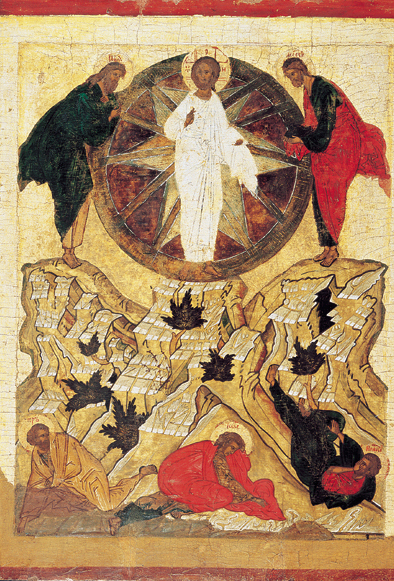Image Details

Leonid Bagdanov/Superstock
“This is my beloved Son, with whom I am well pleased” (Matthew 17:5). In this 16th-century Russian icon of the Transfiguration, Jesus is flanked by Moses and Elijah, while the disciples Peter, James and John fall to the ground in wonder. As described in the Synoptic Gospels (Matthew, Mark, and Luke), the Transfiguration may at first seem to be a uniquely Christian story, but it has deep roots in Jewish tradition. In the Gospels, Jesus and three of his disciples climb a high mountain, where Jesus’ face shines like the sun. Moses and Elijah suddenly appear and speak to Jesus. A luminous cloud descends over the disciples, and a voice from the cloud proclaims Jesus as “my Son,” investing him with divine authority.
According to author Herbert W. Basser, the key to understanding this story can be found in rabbinic literature. Though the Hebrew Bible does not directly link the Messiah with Moses and Elijah, a midrash, a rabbinic explanation and expansion of the biblical text, does. A midrash to Psalm 43 compares the redemption Moses brought to the Jews in Egypt with the redemption the Messiah will bring, and identifies Elijah as the harbinger of that Messiah.
